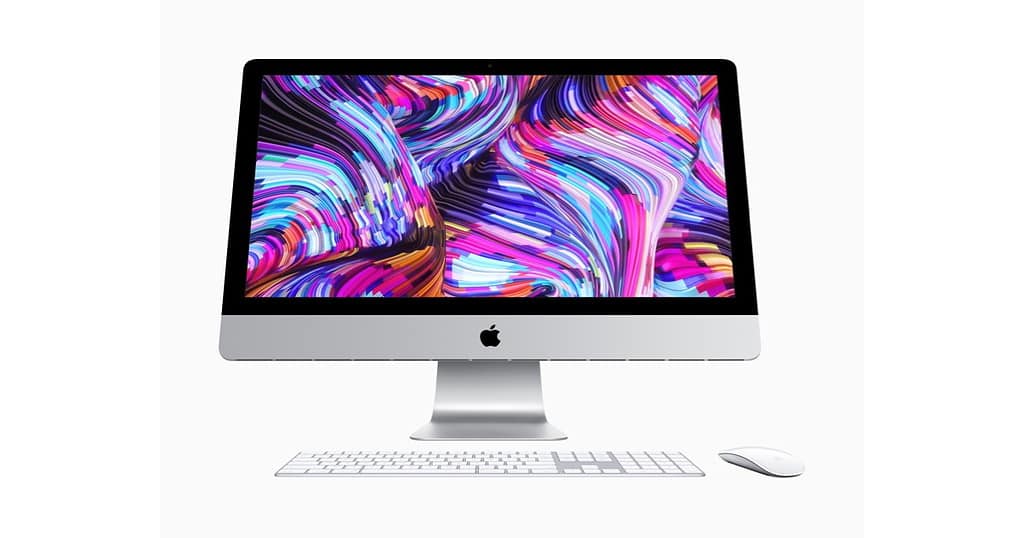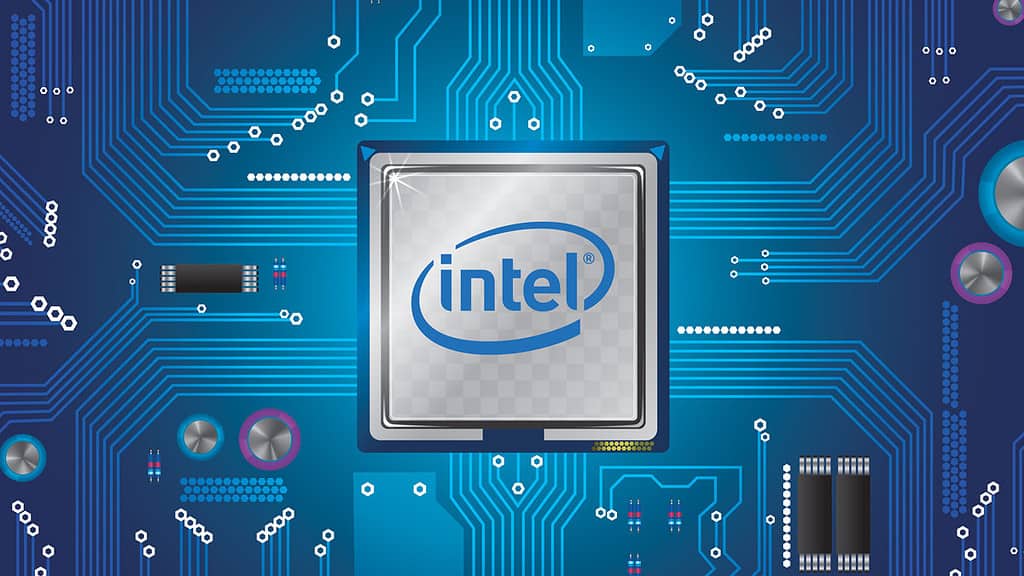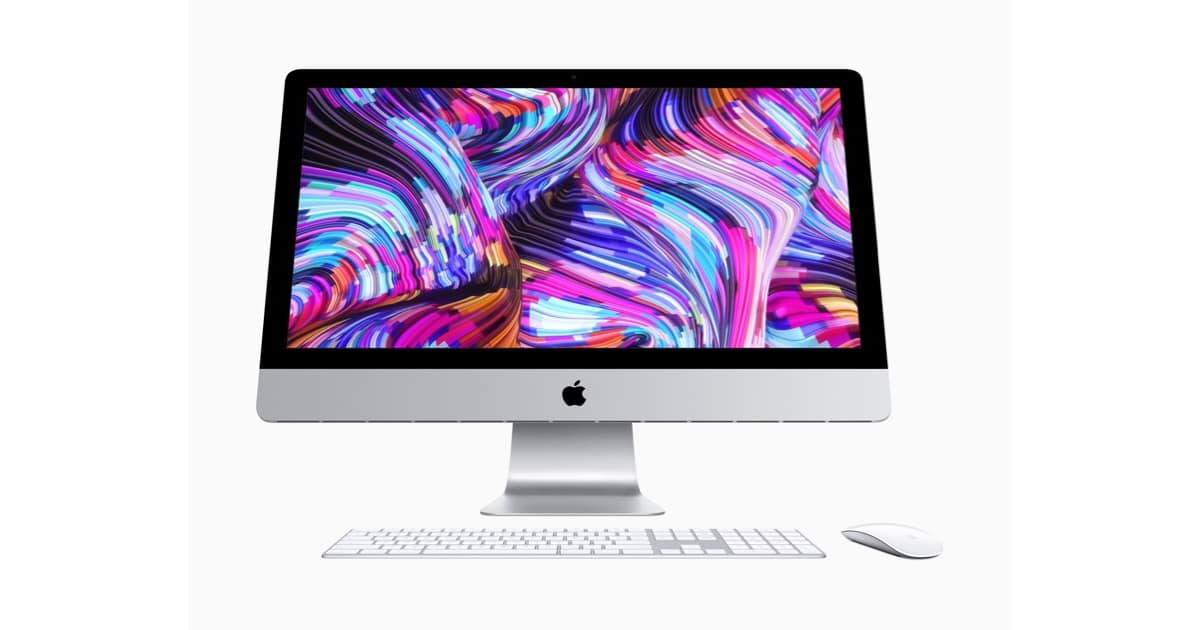The 2019 iMac came nine months after the Coffee Lake Macbook Pros of July 2018. Why that happened is becoming much more clear.

The starting point is the Apple Q2 2019 Financial Report. Apple CFO Luca Maestri, in his opening remarks, noted a slight reduction in Mac revenue “with the decline driven primarily by processor constraints on certain popular models.”
Whatever does that mean? How could Apple, which uses only a small percentage of all of Intel’s CPU production capacity, experience “processor constraints”?
Here’s what I now think.
The Drive to 10 Nanometers
Recall that Apple shipped (mobile version) Coffee Lake MacBook Pros in July, 2018 and upgraded its MacBook Air (Amber Lake, a mobile CPU) and Mac mini (Coffee Lake) in October 2018. But the iMac, it appears, was destined for a stronger CPU upgrade, notably the 10 nm process Canon Lake. To read more about Canon Lake, see “What to Know About the New Intel CPUs: Coffee Lake & Cannon Lake.”
But Intel has had problems achieving the Canon Lake 10 nm process mass production. It appears that Apple waited for Intel to resolve these issues as we drifted into late 2018, and then Apple was forced to delay the presumptive 2018 iMac into 2019.

Time Marched On
In early March, I suggested several reasons for the delay. “Why Apple May Have Delayed the New iMac.” Reasons number #2 and #3 now look like the best candidates.
[2] Or Apple had already committed to the follow-on CPU, Cannon Lake, and Intel continued to fumble Cannon Lake yet further, likely infuriating Apple. See: “Intel Cannon Lake release date, news, and rumors.”
[3] Finally, Apple may have planned all along to go with ARM in a major architecture shift, just as the company may be doing with the 2019 Mac Pro.
So what to do? Apple waited for Canon Lake, got frustrated, then settled for Coffee Lake and Coffee Lake Refresh (on the high end) with a March 19, 2019 release. TMO took a look at the Intel part numbers and discussed the CPUs used. “Details on Intel CPUs used in Apple’s 2019 iMacs [Chart]” At this point, why even bother with T2 chip integration previously planned. Time to ship product!
And so, no Canon Lake to be seen there.
An ARM and a Leg
At this point, with the move to A-series CPUs in the Mac line almost certain, we’ll likely never see a Canon Lake iMac. Or Mac Pro.
When Apple was dueling with Qualcomm, it turned to Intel for 5G modems. Apple wasn’t happy with Intel’s progress there. Combine that with the Canon Lake snafu, and Apple has probably had it with Intel’s fabrication efforts.
Going with its own A13 (and successors) in the Mac, which is a 7 nm process CPU, has all kinds of advantages. Of course, the obvious ones are control of a critical Mac component, superb integration with macOS, and, of course, better control over Mac release dates.
A myriad of other technical details (e.g., virtual machine hardware) will probably be revealed at WWDC 2019. As Tim Cook said in the latest financial results session with analysts, “You’re not going to want to miss this one.”

Apple likes to have at least two suppliers for major components, so it’s surprising they haven’t used AMD’s x86 chips and Intel’s chips. This would give them more flexibility in supply/pricing negotiations and probably solve product scheduling issues.
I don’t think the issue is ARM vs. x86. More likely Apple wants a common chip across all their devices. Having a common chip reduces costs and fosters having common software across all devices ( which also lowers costs ). Making their own ARM chips is still a large job with some of the same scheduling/manufacturing issues they now experience with Intel. Just because Apple owns the division making the chips doesn’t guarantee a solution to delays. Since Intel coundn’t deliver on mobile chips, Apple is forced to look elsewhere.
Plus ARM forces them to build a software translation layer for all the x86 Mac apps. This effort is non-trivial and Apple has never written such code themselves ( they rented Rosetta until IBM bought it ). Sure it’s possible but it’s costly. Plus Apple has lost many pros letting their Mac Pro languish for years and emphasizing emojis over real functionality. Removing BootCamp might push some more to Windows.
As a developer, I’m not anxious to move apps to a new chip. No matter how “simplified” Apple makes it ( Marzipan etc. ), there is always a ton of work involved.
Its not just Apple that’s suffering, delays are ongoing, we use laptop CPU’s in small form factor machines and they’ve been severely supply constrained at the high clock speeds, and I work for a multinational who probably purchase a lot more chips than Apple.
I agree its likely we’ll see a Rosetta style migration process, which has run smooth as silk in the past, something that cannot be said for anything related to Windows 10.
I know it’s crazy talk, but AMD has perfectly usable Ryzen/Threadripper x86 processors for desktops and is already a GPU supplier for Apple.
Compatibility with 90% o the works is a must for us. That means Intel x86 inside Macs. We love Macs, but if Apple switches to ARM, we will be forced to switch to Windows. A shame for all.
I predict that there will be a Rosetta-like translation to the x86 instruction set when needed. And it it will be fast. Windows and Windows apps, Linux and Linux apps will still run. IMO.
The best outcome would be for the ARM processor to be a high-performance coprocessor alongside a real x86 processor for true compatibility. Most Macs already have ARM coprocessors already.
ARM native stuff could run on ARM, and if you’re not running x86 code then the x86 processor could be turned off or severely power throttled.
A more farfetched possibility (but never count Apple out) is that Apple could add x86 compatibility features to its own processors.
Under licence would make a lot of sense – then all the development effort would be in-house. BTW my PowerPC cube still works..
It will be a huge mistake if Apple abandons Intel processors altogether; at the very least it should create readily repairable, upgradable and expandable professional Macs with Intel processors. Why? Because x86 / x64 is the industry standard. Period. It has nothing to do with the best tech, unfortunately,
Well, what would you suggest they do? If the industry as a whole is moving to 7nm and 5nm (near future), and Intel can’t seem to even get 10nm done reliably, how can Intel continue to be the industry standard? My guess is that Apple already has x86 operational on ARM chips. As much as Apple likes to burn bridges with their various HW and SW changes, they are not oblivious to their own pathway and what’s going to work in the industry.
bother. forgot to turn on alerts. ignore this comment.
This may sound crazy, but at this point, about the only thing that will drive me back into the Mac camp is Apple moving to their own ARM A-chips. I’m tired of Intel. I’m tired of Windows, and I’m tired of Hackintoshing. Please, Apple, make the switch, and make it soon.
Intel was the early leader . Their 486’s were great. Then the Pentium which was good, plus or minus a math error.
Then came the Pentium II, III, and IV each of which was bigger, hotter, and more ridiculous.
Then came the Core series which were pretty good and for a while everything was going swimmingly. Intel had gotten its mojo back and it was on track.
But now it looks like Intel has returned to being the Fab that can’t shoot straight. Nearly everyone else is making 10nm and many 7nm chips while Intel is stuck at 14nm. Promises are made and not kept. 5G modems were played with but never amounted to anything. They dismissed mobile computing completely and are now shut out of the biggest part of the market.
From number one to the bottom of the barrel, it’s sad to see how badly Intel has blown it.
Given the maturity of web-based development and how the apps can be accessed across platforms, I am not sure that processors make a difference anymore. Also, given that Microsoft is heavily invested in making Windows and its components work on ARM the reason for staying with Intel does not exist anymore.
Also, doesn’t it seem that Intel has been slipping a lot lately? Aren’t some of the AMD Ryzen-based systems outperforming Intel’s low power CPUs? Apple uses some of AMD’s graphics processors, maybe they should consider their K10 CPUs?